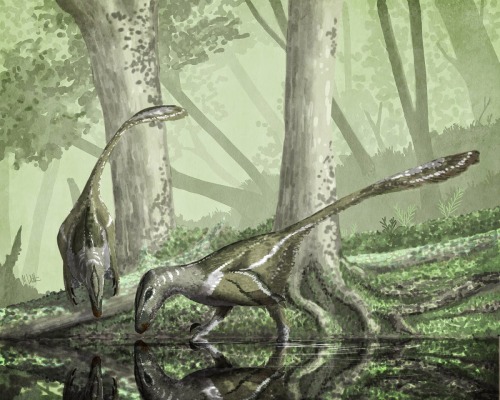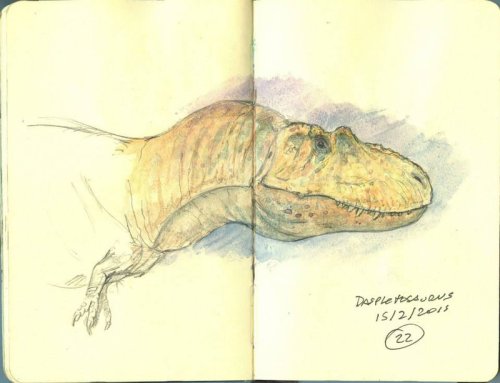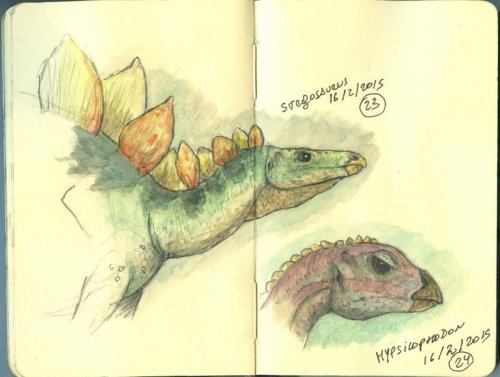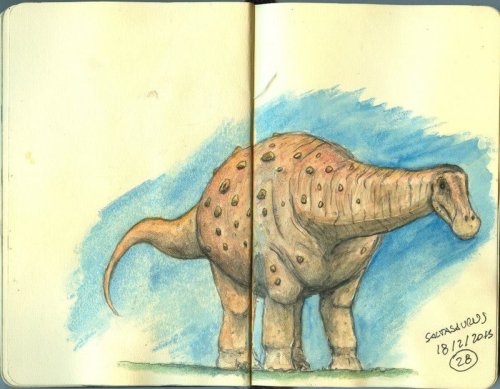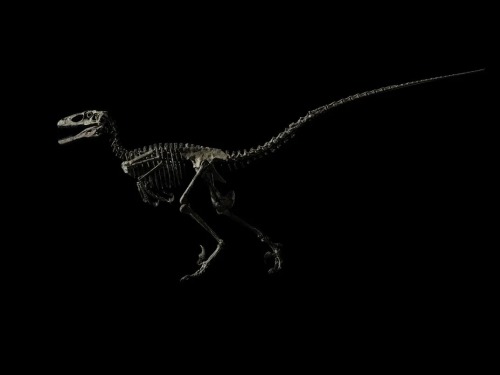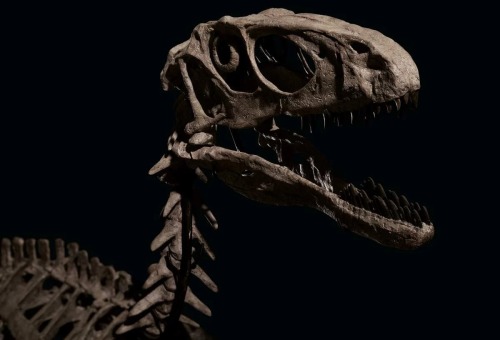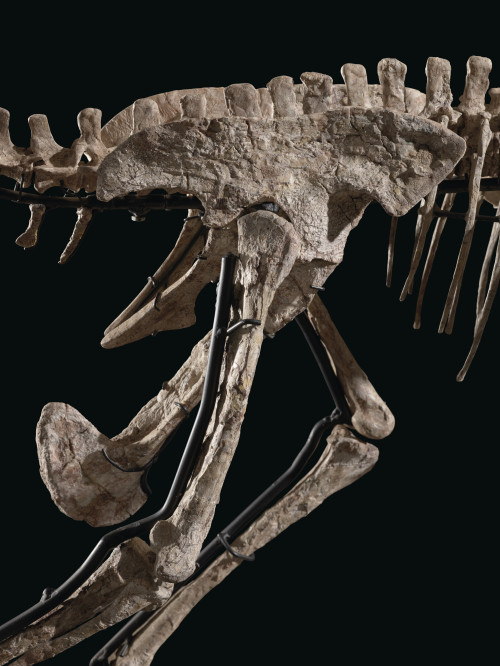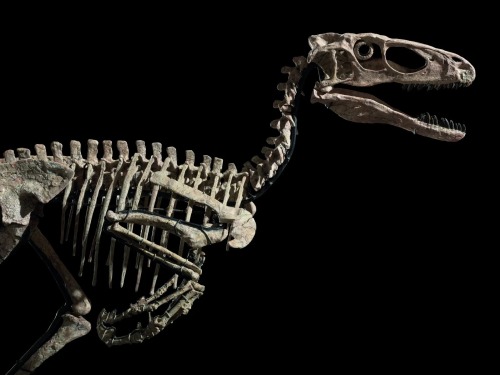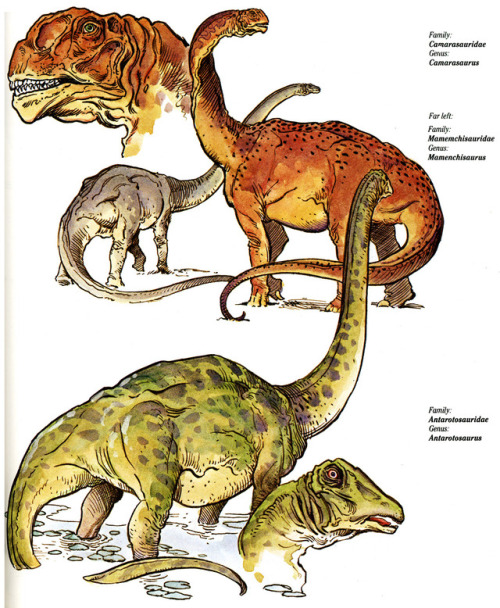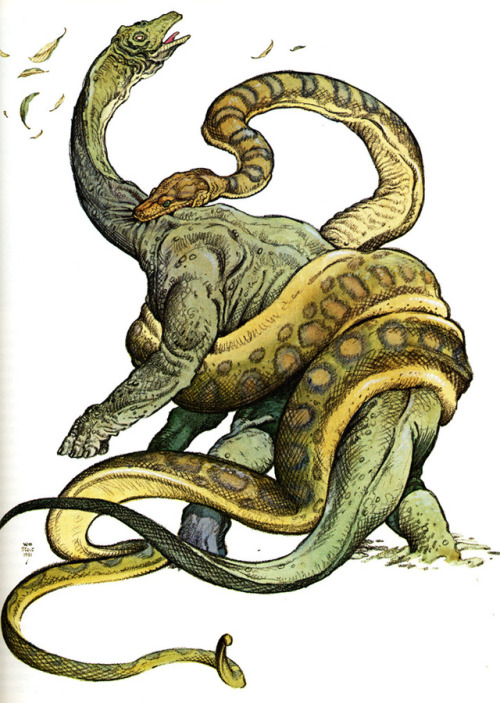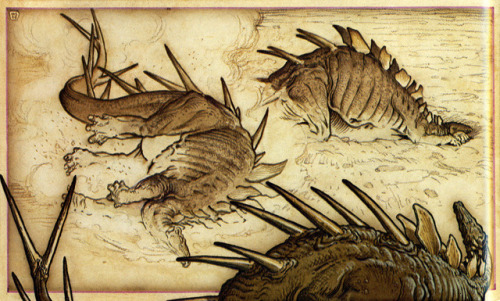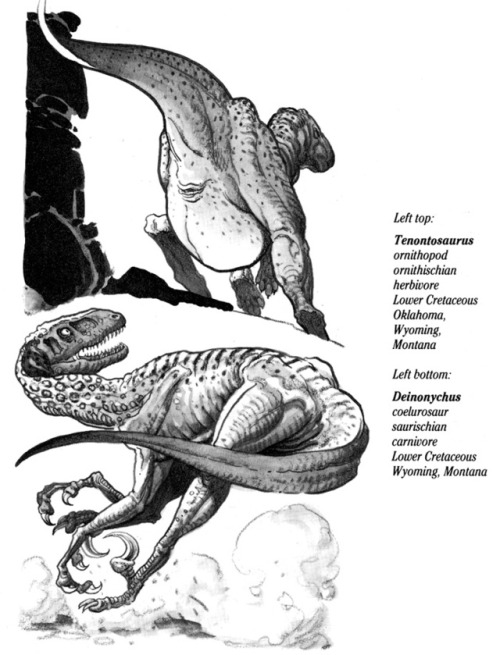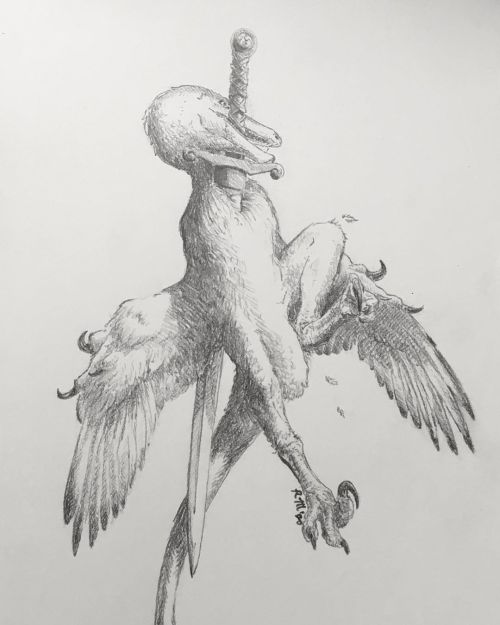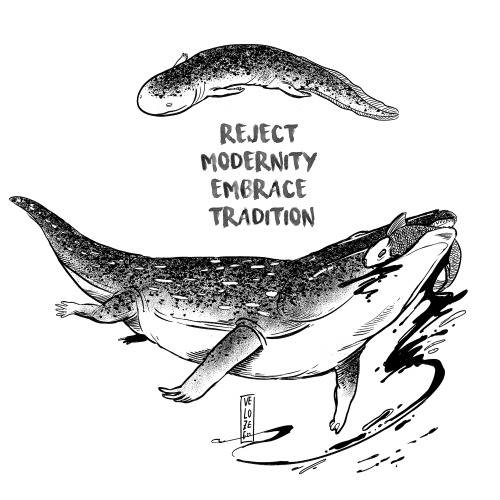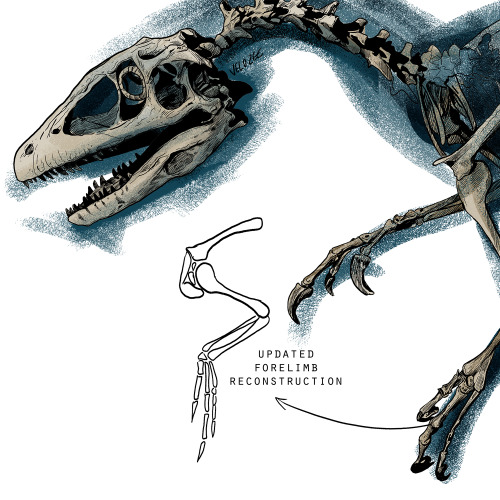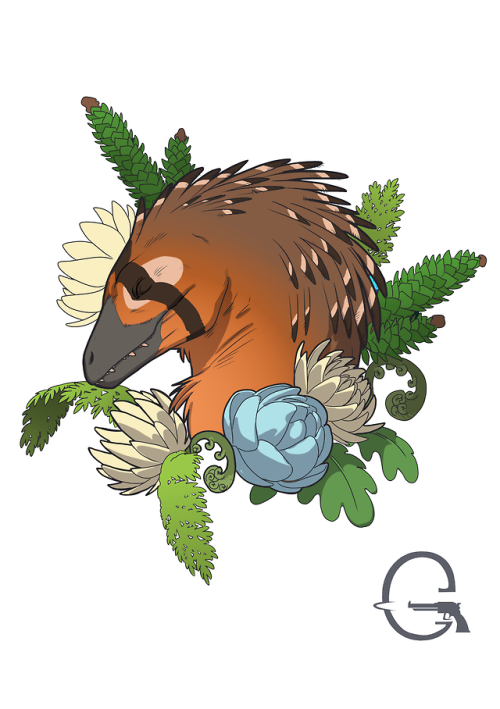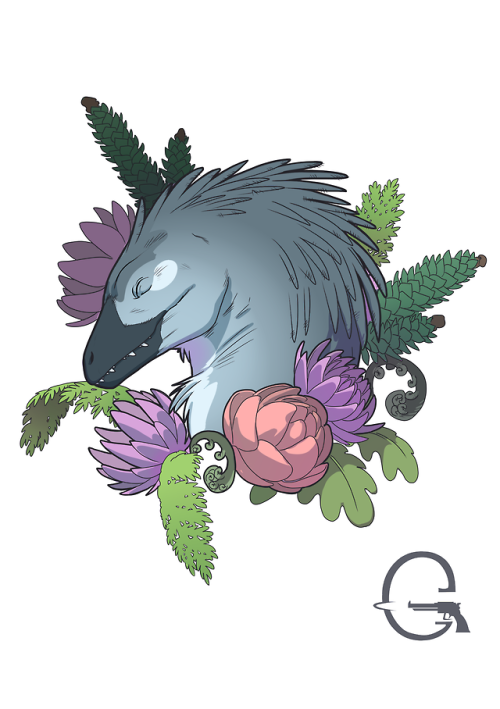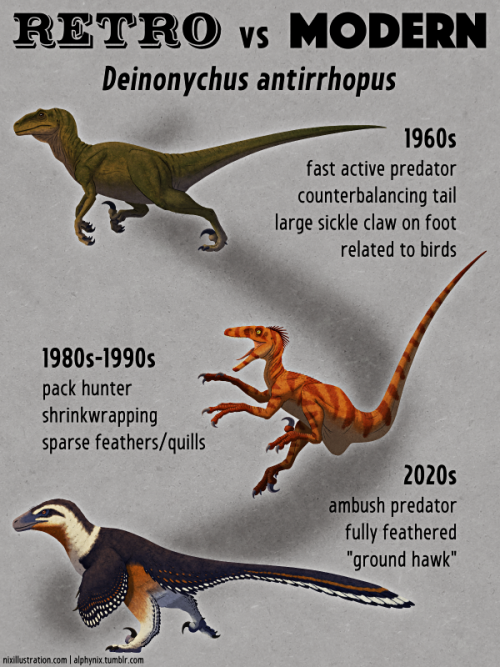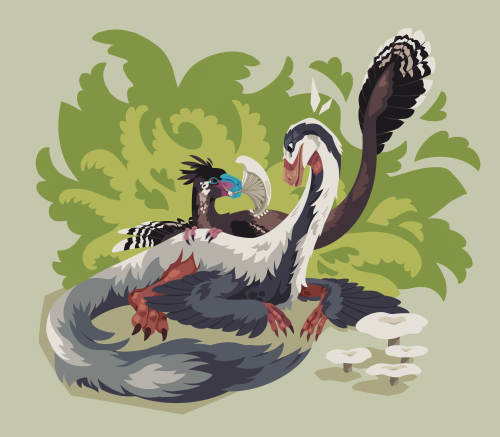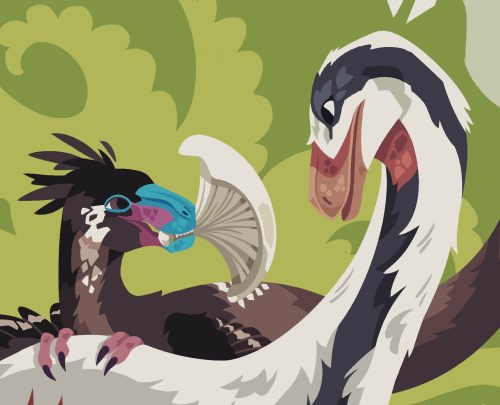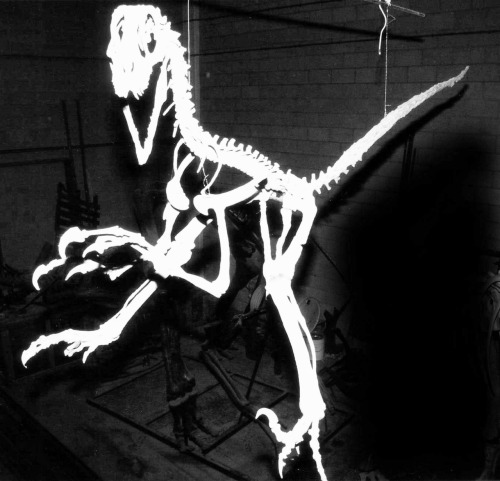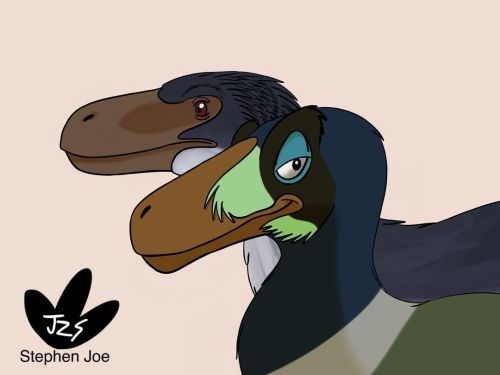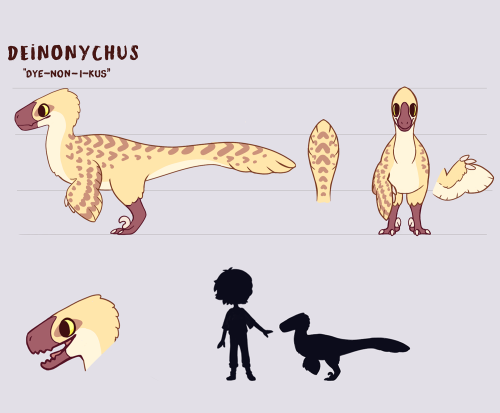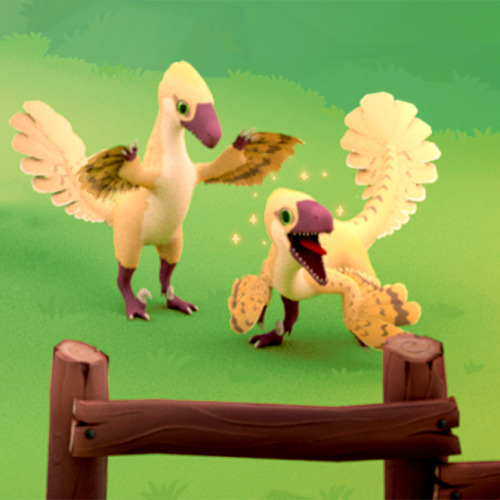#deinonychus
Getting ready for Jurassic World Evolution 2 by drawing some more or less imaginative renditions of dinos from the first game. Enjoy!


I don’t know if the JW movies put people off the term “hybrid”, but I felt like mashing up two dinos today and this ended up being a cool pair to do it.
Deinonychus and Dilophosaurus are really similar when you think about it. This almost seems like some primitive dromaeosaur whose fossils would turn up in the next few years.
Deinonychus pair in the swamps, by Mark Witton|Print :
“(…) The Early Cretaceous dromaeosaur Deinonychushas been restored so many times that it’s difficult to come at it from a fresh angle. I thought one way to do that was to not show it on open plains, but in a backswamp. (…) The arms of the foreground animal are pressed tight to the body in the manner proposed by palaeoartistic Queen of the maniraptorans, Emily Willoughby, rather than held half-folded as we’re more used to seeing them. As Emily explains, there is good reason to think the ‘arms out’ postures we’re used to is nonsensical - animals just don’t carry themselves like that” Keep reading
Post link
“Hector” (Deinonychus Antirrhopus), Montana, Usa,
From the Cloverly Formation, Wolf Canyon, Carbon County, Montana, the Early Cretaceous (circa 115-108 million years ago).
Excavated at Wolf Canyon, Carbon County, Montana (in the W1/2NE1/4 of Section 23, Township 4 South, Range 24 East, P.M.M.) 2013-4
Pangea Fossils February 2015.
Fifty million years before the reign of the dinosaurs ended in the age of Tyrannosaurus rex, a smaller, more agile, pack-hunting predator was the most feared animal of its time. The sleek, dynamic, and deadly Deinonychus is one of the most popular and well-known dinosaur species, but also one of the rarest fossils. Its popularity would peak following its leading appearance alongside T. rex as the Raptor in Jurassic Park. Taking his name from the greatest of the Trojan warriors, ‘Hector’ is the most complete skeleton of his species ever found.
Known for its long talon-like claws and elegant frame, Deinonychus flourished in western North America during the Early Cretaceous period. Part of the clade of dinosaurs called theropods (carnivorous animals that can walk on two legs), these sickle-clawed predators were armed with a deadly kick. Their fossil remains are typically found in the Cloverly Formation and the Antlers Formation, which are thought to have provided an environment of tropical and sub-tropical forests, lagoons, swamps, and river deltas for Deinonychusto inhabit.
The name Deinonychus was coined by palaeontologist, John Ostrom, in 1969 and translates to “terrible claw,” in reference to the killing claw on each foot. Shaped like a sickle and held up off the ground when not in use so as to maintain its lethal sharpness, this claw was used to disembowel its prey. It is believed that in order to use the claw with the highest degree of success, Deinonychus would have stood on one leg, holding the target with its long arms, and impaled its prey with a powerful kick. This attack was aided by the ability to use its arms, unlike many other dinosaurs, and the ability to stretch its hand to nine inches long. Indeed, it is believed that the main use of the arms was for this very purpose, and it is unlikely that the arms were ever used to walk on. Its deft movement and predatory skill were further supported by Deinonychus’ ability to stand on its hind legs when attacking other dinosaurs. This upright, offensive stance was facilitated by its long tail that provided essential balance thanks to rows of internal bundles of bony rods that gave the tail additional strength. The tail would otherwise be stretched horizontally when running, and contributed to the exceptional length of this animal, measuring approximately 3 meters long.
119 2⁄3 x 62 1⁄4 x 26in. (304 x 158 x 66cm.)
Courtesy of Christie’s
Post link
Fine. On brand.
.
.
.
#deinonychus #velociraptor #raptor #dromeosaur #dinosaurs #sword #ouch #pointy #doodle #artistsoninstagram
https://www.instagram.com/p/B_v__YrFQTr/?igshid=1tolhcrnutelw
Post link
Retro vs Modern#21:Deinonychus antirrhopus
Deinonychus antirrhopus was one of the most significant dinosaur discoveries of the 20th century, kicking off the Dinosaur Renaissance and the recognition of the evolutionary link between maniraptorantheropods and modern birds.
1960s
The first remains of this species were discovered in North America in the 1930s, but at the time the fossils weren’t officially described or named. It wasn’t until the 1960s that more specimens were found in Montana, representing at least three preserved individuals, and paleontologist John Ostrom recognized that there was something very special about this dinosaur.
In contrast to the prevailing view at the time that theropods were all upright tail-dragging “sluggish lizards” this was clearly a highly specialized and active predator, with a huge sickle-shaped claw on each foot and a long stiff tail for balance – inspiring its scientific name’s meaning of “counterbalancing terrible claw”.
And while the very first reconstruction of Deinonychus might seem retro to modern eyes, at the time it wasrevolutionary and it went on to become an iconic representation of the species for the next couple of decades. Drawn by Robert Bakker, who was Ostrom’s student at the time, it depicted a lizard-like creature with its body held in a horizontal pose and its tail held out straight behind it. Its head was portrayed as more domed than we now know Deinonychus’ skull to have been, and its neck was up in an alert posture while the animal ran at full sprint, with its sickle-claws held up away from the ground to keep them sharp.
A few years later further discoveries showed a highly bird-like pelvis and hands very similar to those of Archaeopteryx, triggering the Dinosaur Renaissance reinterpretation of dinosaurs as active warm-blooded animals, and the revival of the 19th century idea that they were the ancestors of birds.
1980s-1990s
As the “birds are dinosaurs” idea began to gain acceptance with increasing amounts of anatomical evidence, some paleontologists in the 1980s began to also suspect that highly bird-like dromaeosauridslikeDeinonychus might have also been feathered. Some reconstructions during this time showed this to varying degrees, particularly those drawn by Bakkerandby Gregory Paul – but it didn’t really catch on more widely at first, for one very big reason:
Jurassic Parkhappened.
Dromaeosaurs hadn’t been well-known dinosaurs to the general public before that point, but the 1993 JP “raptors” were an instant hit in pop culture. Physically based much more on Deinonychus than on Velociraptor, and exemplifying the renaissance view of dinosaurs in major media for the first time, the movie’s fully scaled and oversized version of these animals dominated popular depictions for years afterwards. Even the most rigorous and anatomically accurate artwork showcasing their bird-like features still usually kept them completely naked to retain that familiar reptilian appearance.
Most 1990s attempts at any feathering tended towards being as sparse as possible – often along with the shrinkwrapping typical for the era – at best being decent for the time but what we’d now deride as “half-assed”, and at worst being “a few token quills on the back of the head”.
Deinonychus fossils found in association with Tenontosaurus were also interpreted as being evidence of cooperative pack hunting behavior during this time, and it became a common paleoart meme to depict the large herbivore being constantly swarmed by ravenous raptors.
2020s
The mid-1990s discovery of fully-feathered dinosaurs like Sinosauropteryx in China, followed a few years later by raptors with wing-feathered arms like Sinornithosaurus, gradually began to put the fluff back onto dinosaurs like Deinonychus.
(…At least in reasonably scientific paleoart. The much much stronger and ongoing resistance from popular culture is far too big a subject to get into here. But maybe, just maybe, we’re finally hitting a turning point there?)
Early attempts at properly feathering dinosaurs were a bit awkward, usually looking rather like a bunch of scruffy greasy hair glued onto a scaly raptor,a dinosaur wearing fuzzy pajamas, or like the old “bird-lizard” depictions of Archaeopteryx. Even into the early 2010s some paleoart memes were still common in depictions of dromaeosaurs, but increasingly better understanding of their anatomy and plumage arrangements over the last decade or so has brought us to a much more birdlike interpretation of these animals – with paleoartists like Emily Willoughby being especially influential in popularizing the modern view of dinosaurs like Deinonychus.
We now know Deinonychus lived during the Early Cretaceous, about 115-108 million years ago, in what is now the Mountain WestandSouth Central United States. Up to around 3.4m long (11’), it stood about 1m tall (3'3"), similar in size to a large dog.
It had blade-like teeth in its jaws, and forward-facing eyes with stereoscopic vision. Its three-fingered arms would have been covered by wing-like feathers, and its tail probably had feathers all the way along its length and was stiffened but not totally inflexible.
It may have used the sickle-claws on its feet to pin down struggling prey, eating it alive while flapping its wings and waving its tail for balance. And while often depicted as an extremely fast-runner, its leg proportions and foot anatomy suggest it was actually built more for walking and had an especially strong grip strength in its feet, trading speed for power and probably being more of an ambush predator – often being compared to a “giant ground-hawk”.
Pack hunting has been called into question recently, too, arguing that the Tenontosaurus sites may actually represent crocodile-like or Komodo dragon-like behavior with mobs of scavenging individuals congregating at a carcass. But other evidence from trackways and Utahraptor does offer potential support for pack behavior in raptors, so it’s still open to interpretation.
———
Post link

The prompt was inside outside- this is my art of deinonychus based on a heron because I read that it may have lived in a Louisiana-like swamp
Hello, here’s some of my cartoony dinosaur / pterosaur art I’ve been making over on twitter










Jurassic June day 17: Ceratosaurus and day 18: Deinonychus!




Female and chick Deinonychus

Dad’s babysitting the new chicks and their teenager
Happy #DeinonychusDay on 25th February of 2022. (And that was way back in 1969.)
Above left is realistic deinonychus and bottom right is stylish version of mine for upcoming Dino Kids comics. #sketchbookapp #artistsoninstagram #myart #paleoart #deinonychus #deinonychusantirrhopus
https://www.instagram.com/p/CaaUcmkvV08/?utm_medium=tumblr
Post link
Been kicking this idea around for a while, finally managed to get it looking more or less the way I wanted.
Here, a cantankerous adult male Aquilops just finished nipping off a good chunk of the tail fan of an unlucky juvenile Deinonychus.
Imagine a proper background rather than a gradient.
Post link
Meet Paleo Pines’ Deinonychus
Deinonychus is an energetic and curious raptor companion found in shady, riverside locations.
This small dino doesn’t like exposed spaces and must be kept in groups of at least 3 or else they’ll get lonely and sad!
If tamed, they can accompany the player on adventures and help track down specificly selected dinos.
Post link
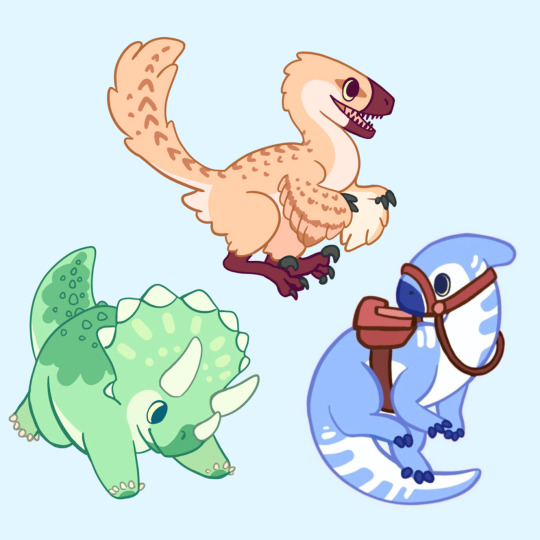

Who could resist some lil dino pals?
These were some sticker test designs from last year that were given out at Gamescom and on our discord server!
Perhaps the full set will return one day…❤️
Steam Wishlist
Join our Discord



